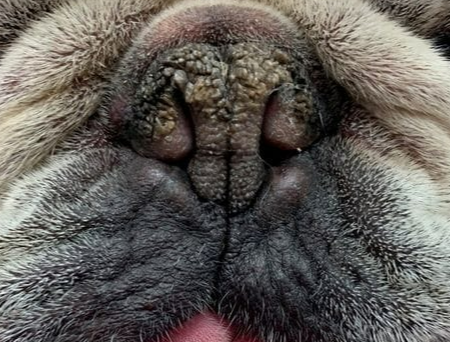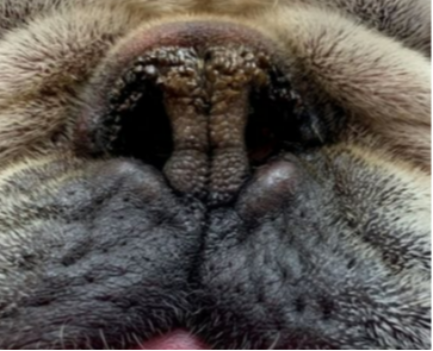Brachycephalic Obstructive Airway Syndrome (BOAS) - surgery overview
Snuffling, snorting, snoring and coughing...are common sounds we hear from our brachycephalic pets and are often mistakenly considered normal.
While these dogs are full of personality and life, they commonly have issues with their respiratory tract and related issues with the gastrointestinal tract.
What is brachycepahlic obstructive airway syndrome?
Brachycephalic obstructive airway syndrome or BOAS is a condition of short nose breed dogs where the upper airway has obstruction to air flow due to abnormalities of the anatomy of the upper airway. The obstruction blocks the free flow of air during inspiration causing turbulence, increase in air velocity and negative pressure. This often produces daily lifestyle limitations such as snoring, exercise intolerance and gastrointestinal symptoms. In extreme cases poor exercise tolerance and poor heat regulation can have fatal consequences. There are many different sites where obstruction can occur and in any given case there are multiple sites contributing to the overall problem.
Sites of airway obstruction include: Nostrils, soft palate, larynx and trachea.
Secondary changes: Everted laryngeal saccules and laryngeal collapse.
Symptoms of airway obstructive syndrome: Inspiratory noise - stertor/ stridor, exercise intolerance, poor heat tolerance and snoring.
Gastro intestinal signs: Vomiting, regurgitation, oesophagitis, gastrooesophageal reflux disease (GORD).
What is the procedure?
The procedure aims to remove where possible the obstructions to airflow, reducing turbulence and airway pressure. In any given patient there are several sites for airway obstruction and surgery may be performed on one or all of these. The nares can be opened up, the soft palate can be shortened and thinned and excess pharyngeal tissue can be removed. Structures such as the trachea cannot be changed. Early intervention (younger patient) limits progression of the condition.

Nares before surgery

Nares after surgery
What are the benefits?
Improved air flow. 90-95% of patients are helped by surgery. Early surgical intervention reduces progression and development of secondary changes. The benefits often include additional reduction in gastro-intestinal symptoms.
What are the risks of surgery?
All surgery carries a risk of complications. It is important that the owner understand these risks. In certain cases these complications may require further surgical procedures to manage.
Surgical risks include:
- Risks associated with general anaesthesia
- This procedure involves the respiratory system. Any dysfunction to the upper airway such as swelling may cause significant issues to breathing and may be life threatening. These complications are rare.
What aftercare is required?
Patients should be observed for the first 12-24 hours after surgery. They should be kept calm and rested for 10-14 days after surgery. Kept cool. They require feeding of ‘chunks’ of food such as chicken or beef. Dry or liquid foods should be avoided. Patients may go off food for a few days.
A more detailed aftercare plan will be supplied on patient discharge.
